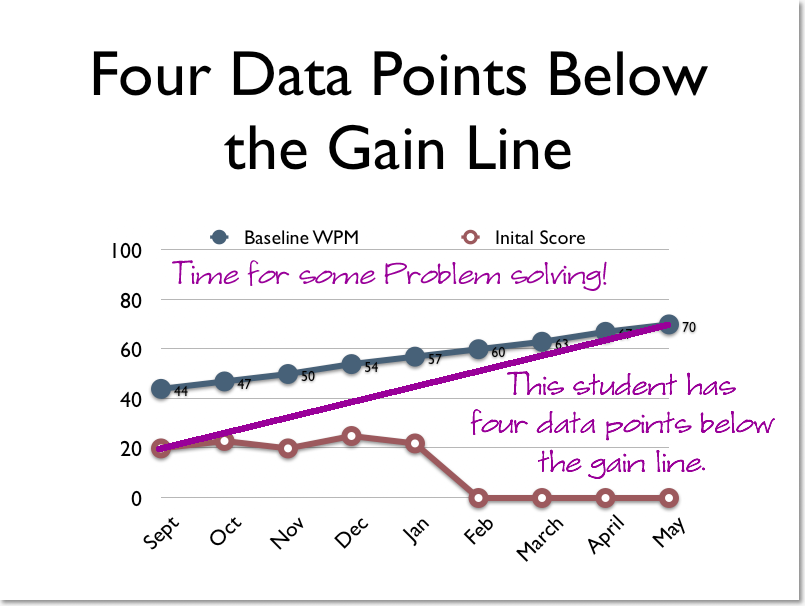Progress Monitoring
Baseline
Progress monitoring in an ongoing assessment, that can be given easily and frequently to gauge the effectiveness of the intervention. A baseline must be in place for successful progress monitoring.
For example, all the DIBELS assessments establish a baseline at the 40th percentile of where students scored on that particular assessment. It is the minimal acceptable score a student can achieve and still be considered to be making adequate progress.
The baseline can change over time. Take the 2nd grade DIBELS Oral Reading Fluency assessment. At the beginning of the year, the benchmark is 44 words per minute (wpm). By the end of the year, the benchmark moves to 70 wpm.
Gain Line
If a score falls below the baseline at the beginning of the year, a line can be drawn between the student’s initial score and the year end benchmark. This becomes a ‘gain line’ which represents the rate that the student needs to progress in order to meet the benchmark.
Time to Change
Then as the assessments are repeatedly given and charted, the student’s progress toward the benchmark is measured. As a rule of thumb, more than four consecutive data points below this ‘gain line’ indicate that an evaluation of the intervention is necessary.



